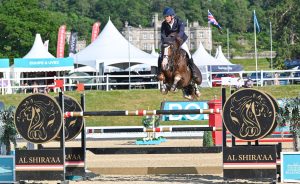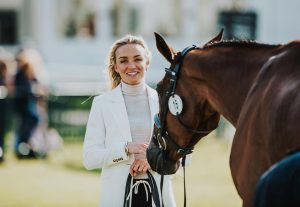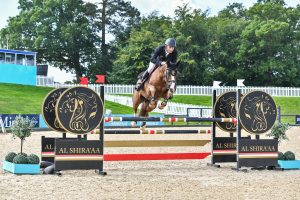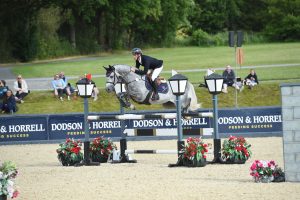




Only 6 weeks until Iselham kicks off the 2015 BE Season
How about 11 Taekwondo Routines To Strengthen The Lower Body
With riders looking at fitness regimes for their horses perhaps its time to consider changing that out of bed straight to the coffee machine for some Zen lower body strengthening ready to push forward in the rankings in next seasons sporting schedule.
How many of us just crawl out of bed and try to untie ourselves with a bit of a stretch or bend as we drink that first cup of coffee? As Horse’men we need to take care of our bodies as they are 100% involved in how well we function both on and off a horse.
Lower body is always prone to injuries and muscle pulls. This part is worked out mostly. While riding, mucking out, moving feed bales around, in fact much of our horse related activities involve bending, lifting and employing the lower half of our bodies and the lower back is particularly vulnerable, and the area most abused by incorrect lifting and poor posture when off the horse. Its interesting how many riders can have good posture on top of a horse but walk with poking heads and rounded shoulders on the ground. It is also this portion that helps in balancing the entire body. Having a strong lower part helps a person in staying fit and flexible.
Lower backs are very prone to injuries and unnecessary pains. While sleeping, we can hurt our lower back. While climbing the stairs, we can hurt the lower back. But the chances are higher while we try to pull or carry those show jump wings or one too many haynets around.
Unless we have a strong lower back, it may well get seriously injured while doing our jobs and taking some time out to mitigate the risks by strengthening this vulnerable area can only make sense. On the plus side if your are groaning by now! Is the added benefit of being more aware of your own body and it follows that this awareness will help you feel how your own movement is affecting your horses way of going. A strong lower body does not mean you need to ride strongly it means that you will have more control and therefore be more proactive in engaging your horse and influencing his way of going.
Performing some basic stretches can help in strengthening the lower back region. There are several Taekwondo stretch routines that can be included in your daily fitness regime to put more stability in the lower back region. Have a look at 11 of the best lower back Taekwondo stretches to strengthen your lower back. (please take care when new forms of exercise, read through all recommendations associated each exercise before starting and take note of any recommended precautions)
1. Supine Hamstring Taekwondo Stretch
Lie flat down on the floor with the back touching it. It will be better if there is a rubber mat placed over the empty floor surface. This will offer for a more comfortable feel after lying down on your back. However, you should lie down in such a way that the legs can rest on the wall while raised in a straighter manner.
Bend one of your leg with feet flatly placed on the ground. The other leg needs to be raised up in the straightest position possible. This leg needs to be rested on the wall to prevent falling down. Now, with both your hands, try to touch the feet or calf region. Remember, not to raise major portion of your upper body. Your abdominal muscles need to be engaged in such a manner that it can stabilise the spinal cord perfectly.
Hold for at least 10 seconds. Then, relax. After 30 seconds rest, repeat.
Precaution:
Never try to put higher pressure on your spinal cord while touching the feet or calf region. Putting too much pressure can lead to injuring the lower back.
2. Seated Hamstring Stretch
To perform this stretching exercise, place a rubber mat on the floor. Then, sit on the mat. Legs should be in a stretched position with knees absolutely straight. Also, keep your back straight.
Now, with both the hands, try to touch the toe. During the initial days, you will not be able to touch or hold the toe for long. However, the main objective is to get your hand fingers closer to the toe, as much possible. This will generate enormous stretch to the hamstring muscle. While your hand fingers come to the closest position to toe, pause for a second or two. Then, return back to the starting position.
Repetitions: 10
Precaution: Don’t force your lower back too much while performing this stretching exercise. Obviously, a little force will be required while trying to touch the toe, but that should be marginal. Giving too much pressure to the lower back can cause unnecessary injury.
3. Standing Hamstring Stretch
This is a fine stretching exercise not only for the hamstrings but also lower back portion.
Procedure:
Stand straight. Now, bring your right foot in front of the left foot. Right toe should be in lifted position. There should be 4-5 inches width in between the two feet. Bend you left knee marginally and then pull your abs gently inward. Lean forward and then rest both the palms on top of the left thigh. This is required to keep your body well supported and maintain a proper balance.
Shoulders should be down and in an absolute relaxed position. Never try to round the lower back region. A mild stretching pull can be felt that will slowly spread through back of the leg. Repeat this stretching exercise with your left leg forward.
Repetitions: 10 per leg
Precaution:
Those who are suffering from lower back injuries/pain, they can perform this exercise while lying down on the back over a floor mat, while extending legs upward.
4. Kneeling Quadriceps Taekwondo Stretch
This stretching exercise helps in stabilizing the quadriceps muscle that forms the front portion of thigh.
Procedure:
Kneel with left leg forward and right leg backward (Refer to the picture). Try to reach back in order to get a suitable grip on front side of back leg. Now, try to bend knee slowly while lifting the front foot from the ground. It should be lifted closer towards buttock. Lift until you feel stretch across front of thigh and hip. Remain in this position for 15 seconds and then release. Repeat the same with your other leg.
Repetitions: 5-6 per leg
Precaution:
Be absolutely careful while doing this stretching exercise. Don’t ever strain the knees. This may lead to some serious injury.
5. Lying Quadriceps Taekwondo Stretch
This exercise is extremely beneficial in stretching the quads as well the buttocks.
Procedure:
Sit on floor mat with left leg bent before you. However, the right leg should be bent opposite to you. Lean to left on forearm while keeping the abs totally engaged. With the right hand, try to grab the top of right foot. Now, try to pull heel gently towards glutes This is done to stretch the muscles of front thigh. Remain in this position for 15 seconds. Then switch back to the other end.
Precaution:
Perform this stretching in an extremely slow manner. Performing this stretching in a faster way can lead to muscle pull and strain.
6. Standing Quadriceps Taekwondo Stretch
This stretching exercise is great to flexible the quadriceps muscle.
Procedure:
Stand straight. Place your feet in a hip-width apart stance. Pull in your abdominal portion and then relax the shoulders. Then, bent your right leg. Try to bring the heel towards your buttock. Now, grasp right foot with you left hand. Once stretch is felt, pause for 5 seconds and return back to the starting position. Repeat the same procedure with left foot.
For those who find grasping right foot with left hand a much uncomfortable position, they can use right hand for the purpose.
Precaution:
Hold on to a wall or chair for balancing. Also, perform this workout in an extremely gentle manner. Or else, quads may get injured.
7. Lunge Hip Flexor Taekwondo Stretch
This stretching workout targets two major muscle groups: Iliopsoas & Soleus.
Procedure:
Stand in a lunging position but this time, with right foot far behind the left foot and vice versa.
While keeping the rear leg hips in a straight position, squat downwards in a chest-high manner. rear hips should be pushed down and forward. Once in this stretched position, hold for three seconds. Return back to the starting position. Repeat with other leg.
Repetitions: 10 with each leg
Precaution: While performing this stretching workout, it is necessary to wear proper shoes. A little bit of careless act can lead to hurting the feet as well quads muscle.
8. Kneeling Hip Flexor Taekwondo Stretch
This stretching workout targets the Iliopsoas, Gluteus Maximus, Adductor Magnus, and Soleus muscle group.
Procedure:
Stand in forward lunge position on a padded mat. Now, position the foot in such a manner that it remains beyond the forward knee. Hands need to be placed on the knee. While pushing the hips forward, try to straighten up the rear leg hip. As tension is experienced, take a brief pause for 5-6 seconds. Return back to the starting position. Repeat the same with other leg.
Repetitions: 10-12
Precautions:
Always perform this stretching exercise on a suitable rubber mat. This will protect the knees from any sudden injury and will also provide a suitable support to the feet.
9. Taekwondo Pelvic Tilt
Procedure;
Lie done on your back. Knees should be in a bent position while feet firmly placed on floor. Now, try to tilt the pelvis with belly while trying to contract abdominal as well gluteus muscles. Try to squeeze for at least 15-seconds.
Next, perform this stretch with body in an opposite posture, facing the ground. Tilt your pelvis in other direction while arching back and creating hollowness between spine and ground. Try to squeeze for 10 seconds.
Repetitions: 10-12 in each position
Precaution: Form is necessary. Perform it in presence of a suitable instructor.
10. Taekwondo Split
This is a very similar stretching workout when compared to seated hamstring stretch.
Procedure:
Sit on the floor with legs spread in opposite direction. Refer to the second image. Next, try to touch the toe f right leg with right hand fingers and left with left hand fingers.
Repetitions: 7
11. Taekwondo Segmental Rotation
This is an effective exercise that helps in strengthening the core muscles of lower region.
Procedure:
Lie down on your back. Now, create right angles in between hips and knees. Tighten the abdominal muscles. Try to control on your breathing. Slowly try to move the legs to left while keeping shoulders on ground. Try to go only that much that you can able to. Unnecessary stretch is not required. While stretching, if there is a feel of pain, then you may have gone down too far. It’s not recommended. Don’t allow your feet to touch ground. It is the core region whose support needs to be take to hold feet. Hold for 7 seconds and then return back to the starting position. Repeat the same with legs moving towards the right position.
Zen thoughts for the day – “We have more possibilities available in each moment than we realize.” – Thich Nhat Hanh
So set aside some time in your already manic day for some Zen time to benefit you and your horse.





